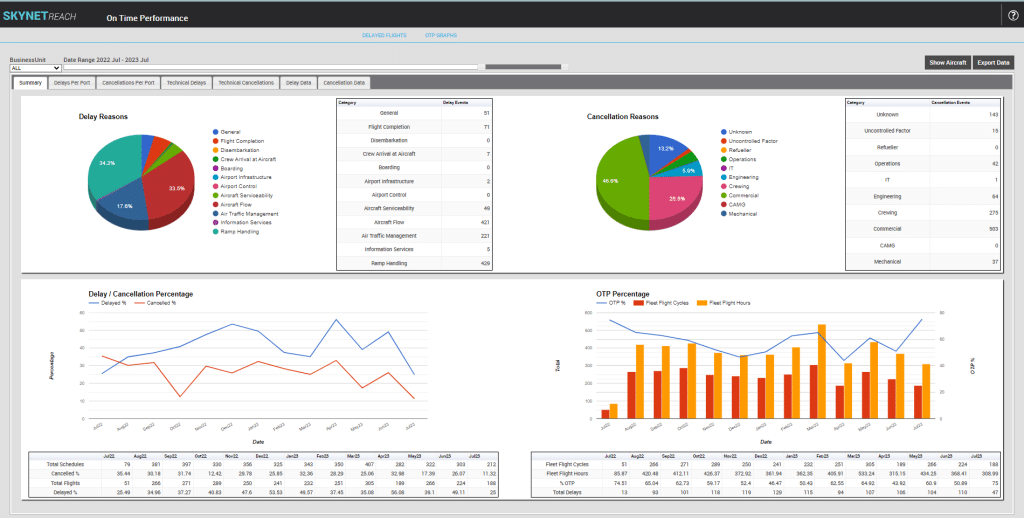As the nexus of all vital aviation operational data, the Operations Control Centre (OCC) is the “nerve centre” for everything that goes into:
- Getting your aircraft into the air
- What happens while they’re up there
- Getting them safely back on the ground
Simply, the OCC is the facility within your company wherein all tactical operational decisions are made, establishing a maximum focus on safety, customer care and efficiency.
Mike Arbuckle, of OCC Tech Design, is a world-leader in the field. He points out that an OCC of big video screens and flashy technology is fine, but what’s actually impressive about a good OCC is what it actually achieves.
“An OCC is not simply an abbreviated Star Wars Control Centre. It’s about having a specifically focused facility, designed with current best-practices for managing your daily operations activity,” Arbuckle says.
“The OCC integrates every aspect of your current operation. Ideally, it gives you a tactical view of how you can best manage your fleet to ensure you continually enhance customer care and produce a great return on investment.”
So, if your company doesn’t yet have a dedicated OCC, this article is an outline of how to establish one and do it efficiently. And, if you already have an OCC, this article will also provide useful information regarding beneficial, next-step enhancements.
Key aspects of a successful OCC
The OCC is where critical minute-to-minute tasks that keep you flying profitably and safely are monitored and managed. The pilots and passengers must have complete trust in the availability and reliability of their OCC staff members and the information they provide.
“Establishing systems, policies and procedures that support OCC requirements is fundamental to ensuring the intended results are obtained,” Arbuckle says.
Let’s look at the five key factors that contribute towards this.
1. Choosing the most beneficial technologies to integrate
Each business operates differently. As such, each OCC has a unique set of data and technologies requiring integration. To achieve the best-practice procedures it is recommended that you use a day-of-operations software solution that is flexible and permits the integrations you need. These data integrations may include:
- Weather from multiple sources
- Accounting software
- Project management software
- Aircraft tracking
- Aircraft scheduling
- Aircraft maintenance scheduling and monitoring
- Flight deck and cabin crew rostering and monitoring
- Passenger Services
- Cargo
- Catering
- Weight and balance
- Security
- NOTAMs (notice to airmen)
- Interior and exterior OCC communications
- Safety process tracking
- Air Traffic Control.
2. Connectivity for your OCC
As your fleet operates, the OCC will send and receive a substantial amount of data. In terms of this connectivity, everything relies on the following three factors:
- Continual internet feed
- Reliable electrical power
- Resilient cyber security.
Ideally, each of these systems must have a backup. The initial cost of backups may initially seem to be unacceptable; however, the failure of any one of these systems may create a disruption that takes months – or even years – to overcome, especially in terms of public opinion.
3. Communication inside and outside your OCC
As a “neuron” in “nerve centre”, each OCC staff member may be responsible for scores of aircraft, many of which will be airborne simultaneously. It’s vitally important that the OCC staff have the capability to communicate with all flights at all times.
Further, the OCC itself should enhance communications between staff. Its design should place each member within hearing range of other staff. This enables more than one person to hear phone or radio conversations.
If a conversation involves a potentially disruptive issue, the people within earshot should be trained on how to offer assistance immediately.
4. Matching an OCC to the aviation tasks
There is no one-size-fits-all template for the design of an OCC: each must integrate different data streams based on user requirements. This means an OCC must be designed according to need, not simply for an impressive “Star Wars” effect (which does happen). Here are some general trends according to the type of aviation your company undertakes:
- Aeromedical – The OCC must be linked to and liaise with health services and other third parties. Periodically, the aviation company will have an external operations staff member accompanying a health services provider.
- General aviation – Build your OCC to accommodate low-altitude aviation where schedules are generally unpublished but are still required to operate within government guidelines.
- Commercial aviation – Build your OCC to accommodate high-altitude aviation where schedules are published and adherence to strict government standards is required.
- Offshore – The OCC must monitor and manage safety, flight tracking, weather, contractual data, airborne time, passenger information and aircraft weights.
- Regular public transport – The OCC must prioritise the monitoring of on-time performance, passenger numbers, scheduling, compliance, crewing and cargo.
- Emergency – Emergency aircraft do not fly often, yet must be mission-ready at all times. The OCC must therefore prioritise mission-readiness, air traffic and weather before the aircraft departs. And, once responding to an emergency, the OCC must prioritise flight tracking, air traffic and communications.
- Search and rescue (SAR) – Aircraft used in SAR operations spend extended periods of time in the air. The OCC must prioritise monitoring of communications and performance parameters such as endurance, range and flight tracking. The OCC must also respond to sudden changes, typically when flight paths change, the rescue phase begins or as diverse aircraft from various operators enter and depart the search area.
5. Custom inclusions in an OCC
While operations may be broadly similar between different fleets in the same sectors, there will always be aspects where they diverge. It is normal to need custom-built inclusions in your OCC.
Working around these differences in your fleet’s operational integration can require the OCC to integrate various aspects such as:
- Data warehousing
- Accounting processes
- Private ADS-B signals
- satellite connectivity to remote bases.
The ideal OCC
Regardless of the type of aviation in which your company is involved, you can adapt your OCC to manage all operational needs with great efficiency, effectiveness and positive anticipation.
“It’s vitally important to ensure that your OCC is the safest, most efficient, cost effective, customer friendly, and the most effective it can possibly be for your company at this time and for the foreseeable future,” Arbuckle says.
When you implement a well thought out, well-constructed facility that is staffed with well-trained personnel who are equipped with the most effective IT, you will see a noticeable improvement to your past procedures.
What’s more, you will begin creating a new paradigm of operational excellence that your competitors will envy.

At SkyNet Aviation, we know that the Operational Control Centre (OCC) is the nerve center for serious air fleet operators – from small fleets that fly frequently, to aeromedical operators, to large airlines.
Setting up an OCC can be daunting. Choosing the right applications that work best for your business purposes can be challenging. And for those who already have an OCC setup, identifying new avenues for improvement is one thing, but integrating these solutions is even harder – technology changes can come with a lot of complexities and costs.
OCC setup and optimization is an important skill, that not many people know how to master. That is why SkyNet Aviation created SkyNet REACH Aero – a platform that acts as the ‘central heart’ of an OCC. It is designed to work-with and alongside-all key industry applications, including Air Maestro, Uplift, Foreflight and more … providing a user-friendly experience that delivers key optics over your fleet whilst enabling you to manage all your daily operations through one central platform.
If you have any questions about your OCC, want to express any OCC challenges, or want to explore possible improvements – feel free to get in contact. A small improvement to your OCC that you may not be aware of may be able to save significant time and money. [email protected]




